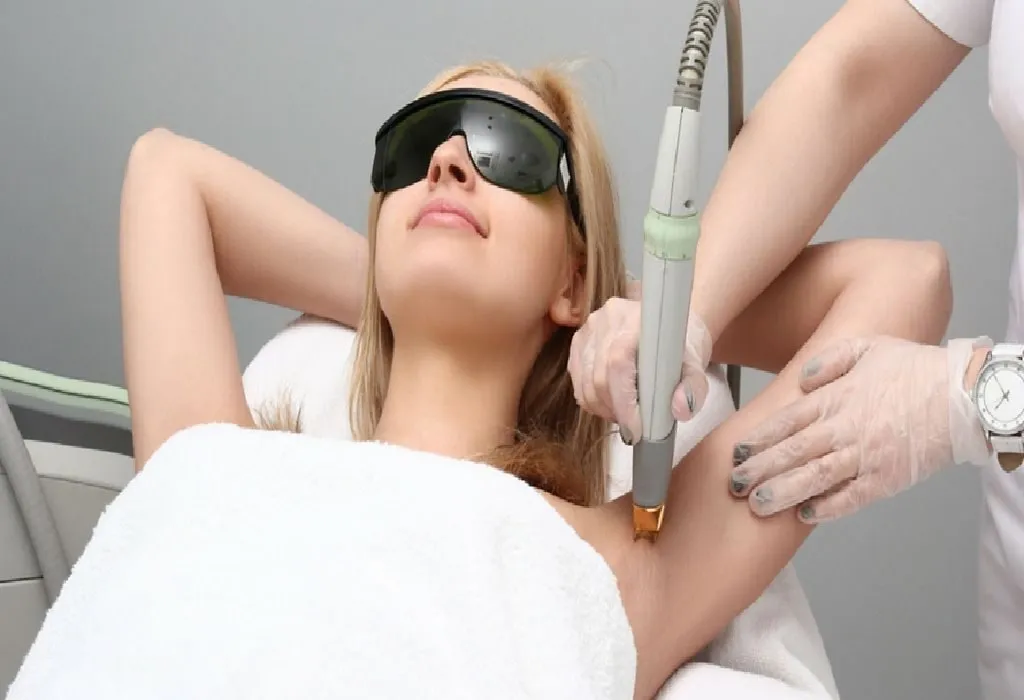Ingrown hairs occur when hair grows back into the skin instead of emerging from the follicle. This can lead to bumps, irritation, and, in some cases, infection. While Laser Hair Removal In Dubai is designed to reduce hair growth and prevent many of these issues, understanding how to manage and prevent ingrown hairs is essential for maintaining optimal skin health.
Understanding Ingrown Hairs
What Are Ingrown Hairs?
Ingrown hairs are hairs that curl back or grow sideways into the skin. They can cause inflammation, redness, and discomfort, and may sometimes lead to the formation of pus-filled bumps. This issue often arises in areas where hair removal has taken place, particularly if the hair follicles become obstructed or irritated.
Why Do Ingrown Hairs Occur After Laser Hair Removal?
Even though laser hair removal targets hair follicles to prevent future hair growth, some individuals might experience ingrown hairs as a side effect. This can happen if hair that is not effectively destroyed during treatment starts to grow back or if the skin is irritated post-procedure. Ingrown hairs are more likely if the skin becomes inflamed or if hair follicles are clogged with dead skin cells.

Prevention Strategies
Follow Post-Treatment Care Instructions
Proper aftercare is crucial in preventing ingrown hairs. Follow your practitioner’s instructions carefully, which may include avoiding certain products and activities that can irritate the skin. For instance, avoiding hot baths, saunas, and vigorous exercise immediately after treatment can help reduce the risk of skin irritation.
Exfoliate Regularly
Regular exfoliation helps remove dead skin cells that can clog hair follicles and lead to ingrown hairs. Use a gentle exfoliating scrub or a chemical exfoliant, such as an alpha-hydroxy acid (AHA) or beta-hydroxy acid (BHA), as recommended by your dermatologist. Exfoliate the treated area two to three times a week to keep the skin smooth and clear.
Moisturize the Skin
Keeping the skin hydrated helps maintain its elasticity and reduces the likelihood of hair follicles becoming obstructed. Use a non-comedogenic moisturizer to soothe and hydrate the treated area. Look for products with soothing ingredients like aloe vera, hyaluronic acid, or ceramides.
Avoid Tight Clothing
Wearing tight clothing can create friction and pressure on the treated area, which may exacerbate irritation and contribute to the development of ingrown hairs. Opt for loose, breathable fabrics to allow your skin to recover comfortably.
Treatment Options for Ingrown Hairs
Use of Over-the-Counter Treatments
Over-the-counter treatments designed for ingrown hairs can help alleviate symptoms. Look for products containing salicylic acid or glycolic acid, which can exfoliate the skin and reduce inflammation. Some treatments also include anti-inflammatory ingredients to soothe irritation.
Apply Warm Compresses
Applying a warm compress to the affected area can help open up clogged follicles and reduce inflammation. Soak a clean cloth in warm water, wring it out, and apply it to the area for a few minutes several times a day. This can help soothe the skin and encourage the hair to break through the surface.
Avoid Picking or Squeezing
While it may be tempting to pick at or squeeze ingrown hairs, this can lead to further irritation or infection. Instead, use gentle methods to treat and manage the area. If the ingrown hair does not resolve with at-home care, consult your dermatologist for advice on further treatment options.
Consider Professional Treatments
In cases where ingrown hairs are persistent or causing significant discomfort, seek advice from a healthcare professional. They may recommend treatments such as topical antibiotics for infection, or in more severe cases, minor procedures to remove ingrown hairs or address underlying issues.
When to Seek Professional Help
Persistent or Severe Symptoms
If you experience persistent or severe symptoms, such as significant pain, widespread redness, or signs of infection, it is important to consult a dermatologist. They can evaluate the condition of your skin and provide appropriate treatment to address more serious issues.
Unresponsive to Home Treatments
If at-home treatments do not seem to alleviate the problem, a healthcare professional can offer more advanced solutions. They may suggest prescription-strength treatments or evaluate for any underlying conditions that could be contributing to the problem.
Conclusion
Dealing with ingrown hairs after laser hair removal involves understanding the causes, implementing prevention strategies, and seeking appropriate treatments when necessary. By following the recommended aftercare practices, including regular exfoliation and moisturizing, you can minimize the risk of ingrown hairs and maintain smoother, healthier skin. If you encounter persistent issues, consulting with a dermatologist ensures you receive personalized care and effective solutions. Embracing these practices can enhance your overall experience with laser hair removal, leading to more satisfactory and lasting results.





Comments